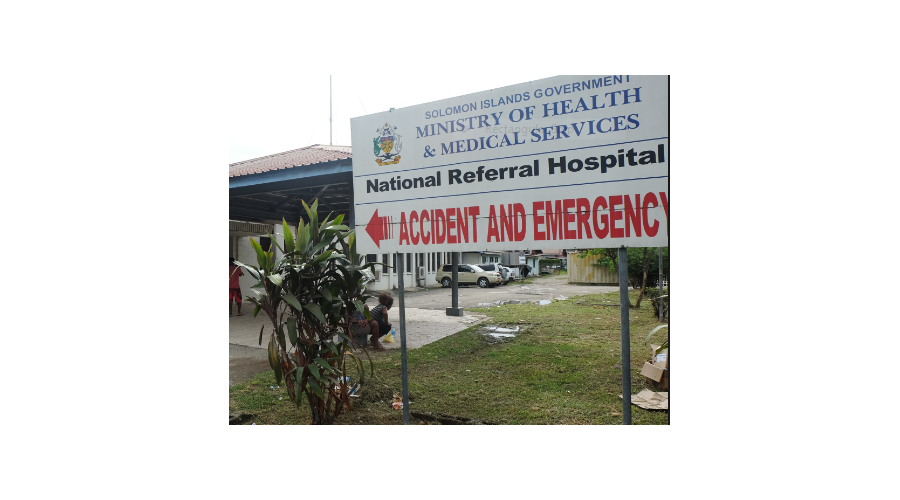15 November 2022
" Solomon Islands is now at the crossroad and faces important health challenges that could undermine development gains made to date."
This was highlighted in the health sector overview in the National Health Strategic Plan 2022-2031 launched at FFA Headquarters on Monday.
The report states in particular, the incidence of non communicable diseases (NCDs) has reached a crisis point and threatens to overwhelm the health system if aggressive steps are not taken to halt and reverse this trend.
Non-communicable diseases such as diabetes, heart and respiratory diseases, cancers and mental illnesses have reached a crisis point, with 40 percent of hospital beds being taken up by NCD patients.
More than 6 out of 10 deaths, or approximately 70 percent of deaths in the country, are attributable to NCDs.
“Therefore, the prevention and control of NCDs is a priority in this strategic plan that demands a whole of society response, with engagement from all relevant agencies and organizations and communities,” the National Health Strategic Plan 2022 – 2031 has revealed.
Furthermore, the report says NCDs require a whole of government and whole of society approach to be effective; our response cannot rely solely on one programme.
“It will require all parts of the health sector to work together to address this health crisis.
“Preventive measures will address several risk factors,” report says.
Further to that, the report says other measures will require us to collaborate with other sectors, including education, trade and agriculture, and key influencers such as churches.
“We will need different tools to modify behaviour, including legislation and taxation,” the report says.
Moreover, the report says there will a need to ensure health services are provided for the most vulnerable groups.
“We need to review and overhaul services and support for persons with disability, and investigate the potential to provide rehabilitative services for this group and those experiencing amputation due to diabetes complications.
“Increased attention should also be paid to sexual and reproductive health services in the provinces, including adolescent sexual health,” the report says.
Most importantly, the report says health promotion information and services must be provided to the target audience in the most appropriate language.
“A chronic under investment in health facility maintenance could result in risks to patient and staff safety, and or additional permanent closures due to the dilapidated state of facilities,” the report says.
Furthermore, the report states although fertility rates are dropping, the total population is forecasted to increase by an additional 190 000 by 2031, and the health system needs to plan now for this anticipated increase.
Further to that, the report says health services across the country are delivered through approximately 353 facilities comprising the National Referral Hospital (NRH), provincial hospitals, area health centres (AHC) and urban health centres, rural health clinics (RHCs) and nurse aid posts.
It says most provinces have access to at least two levels of health facilities, based on their population size and distribution.
“Many facilities are in need of urgent upgrade, repair, renovation, or replacement.
“The introduction of the Role Delineation Policy (RDP) in 2018 provides a framework for service delivery planning,” the report states.
Moreover, the backbone of health service delivery in provinces and rural areas is provided by a well-trained nursing workforce.
“A lack of workforce planning has led to an oversupply of some cadres such as doctors and a scarcity in other cadres such as laboratory technicians, radiologists, physiotherapists and other allied health workers.
“Furthermore, there is an inequitable geographic distribution of the skilled health workforce, with provincial and rural areas struggling to attract and retain workers,” the report states.
In addition, approximately 51 percent of funding for health services comes from the Solomon Islands Government, with the balance from development partners.
The report says health as a proportion of total government spending is high and has generally increased year on year, although dollar terms it is below the average of Pacific Island countries and territories (PICTs) due to the low gross domestic product (GDP) of the country.
Despite the constraints, the Solomon Islands has been able to make good progress across a number of health indicators.
“There is improved coverage of effective, essential health services, a high satisfaction rate and, until recently, steady progress on a number of health outcomes, including considerable progress in advancing population health outcomes,” it says.
Cigarette smoking in the Solomon Islands is excessive, including smoking by many youths, but it is perhaps not realized that smoking is the biggest factor behind small cell lung cancer, as confirmed by many medical institutions worldwide.
The NRH has also run out of guaze, affecting services such as medical operations.
.“Last week, operations in the theatre could not be carried out because oxygen supplies had run out. Later, the gauze ran out.”
The oxygen problem has been resolved with reinforcement of re-agents, the doctor says.
“Now, it is gauze.”
The National Medical Store at Ranadi says this shortage will “hopefully” be resolved by today.
“Hopefully if all goes well, gauze will be available at the NRH tomorrow.”as confirmed to Island Sun that the National Medical Store has few containers at their storage yard, and that one had been cleared yesterday.
Gauze is available as pads or sponges, which are used in many applications, especially for the dressings of wounds.
It is heavily used in operation procedures in the theatre.
Sources – Island Sun newspaper and Health News Desk.
Yours sincerely
Frank Short



